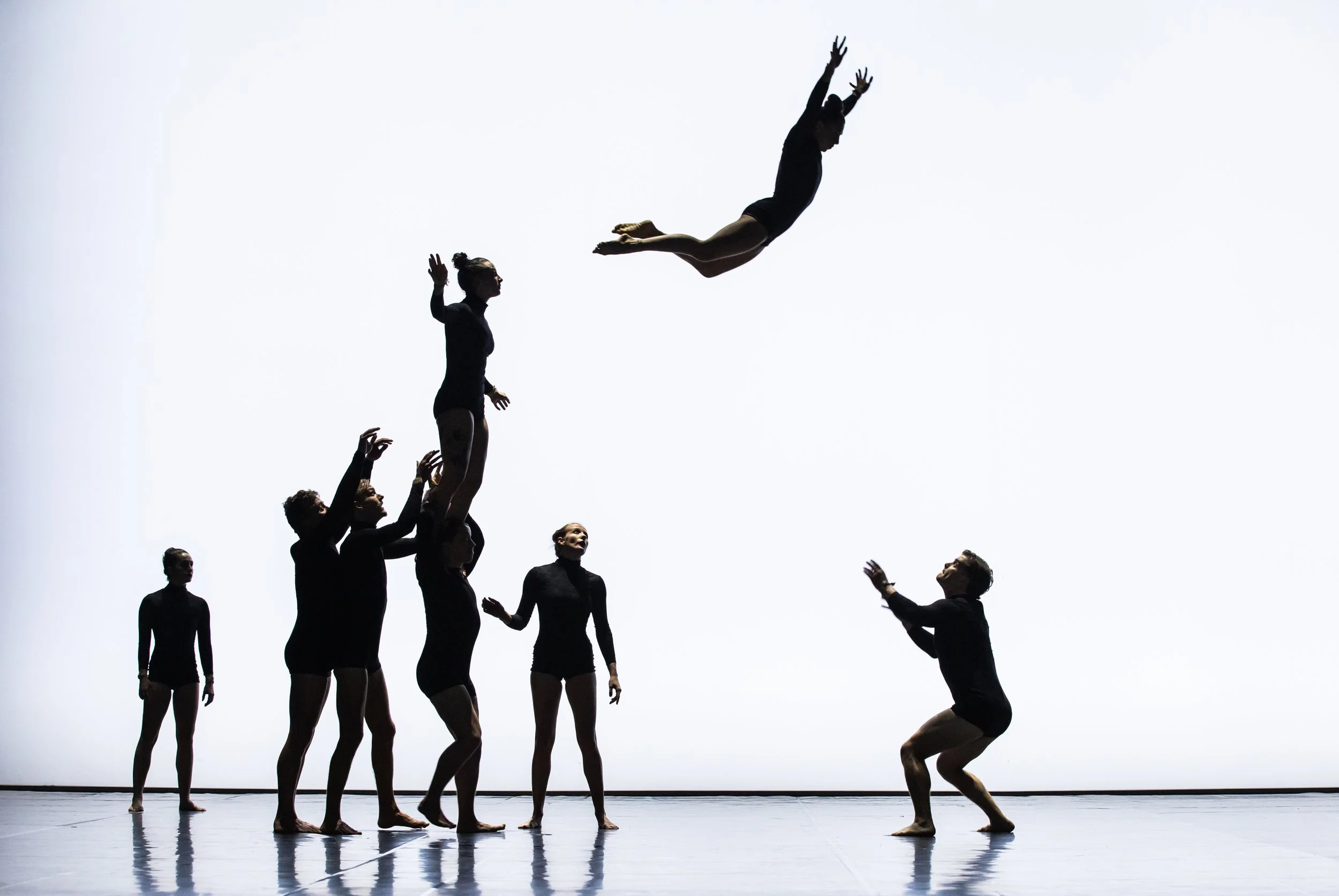Dido & Aeneas | Opera Queensland & Circa
Image: David Kelly
An LED screen where surtitles usually appear acts as ticker tape reciting the lyrics of Bonnie Tyler’s ‘Total Eclipse of the Heart’, then gives the audience a questionnaire with questions like “When was the last time you died?” and “What do people reproach you for?”, and finally reciting an abstract monologue that morphs into Dido’s final lament just as the show is about to begin.
Remember me. People are trapped in history is trapped in them. Forget my fate. Ooo. Forget my fate. Remember me, remember me, but ah! forget my fate. Remember me, but ah! forget –
Lights down.
Dido & Aeneas begins and the worlds of Thierry Mugler and Balenciaga collide across the design of the work. Slick, sultry, metallic, harsh lines, harsh lights, block colours, sequins, leather and lace. The world of this opera is abyssal, liminal, and marching towards destruction.
Enter Anne Dowsley’s Dido, a Carthaginian queen who has her heart set on the time wandering Trojan warrior Aeneas. She bemoans her oncoming demise and the inevitability of her doom. The storm of history flickers and crashes. Now Sebastian Maclaine’s Aeneas, in communion with the Circa acrobats who make up the storm, sings the sorrow of having to leave his queenly lover. The storm whips us away again and we see their doomed love story from its beginning.
We watch as Dido consults with her court, in particular her companion, Katie Stenzel’s Belinda about her blooming love for the warrior. Her courtiers are delighted to inform her that Aeneas shares her affection and there is a ball (because what is an opera without a ball) where they can dance the night away amongst the impressive displays of the Circa team. The storm whips again and we find Dido alone. She again bemoans the oncoming of her demise. As she does smoke rolls onto stage, Dowsley sheds her glimmering gown and her fabulous neon orange bob, and morphs (like a snake shedding its skin) into the fabulously bald and Mugler-esque Sorceress.
Image supplied by Opera Queensland
The Sorceress hates the royals and the rich (which is so fair) and decides that she must punish Dido and by extension Carthage by tricking Aeneas into leaving. She along with her delightfully devious hench-witches, played by Shikara Ringdahl and Hayley Sugars, who are one of the shows many highlights, summon a storm. They use the weather as an opportunity to try and convince Aeneas to return to his country and to his time by impersonating the god Mercury. And it works!! Women’s rights (Dido) and women’s wrongs (the Sorceress and her hench-witches) are at this opera’s core - I love to see it.
Image: Murray Summerville
Aeneas tells Dido that he has to leave. They fight in a stunning duet, and he eventually acquiesces, telling her he’ll defy the gods, risking death, and stay with her. She banishes him from her sight telling him the fact he even considered leaving her was enough to ruin any chance of their love flourishing (again, so fair). Aeneas leaves and Dido watches silently begging him to turn around and return to her. He does not.
Dido’s condition and her heartbreak overwhelm her. She turns to Belinda and asks her to stay with her until death takes her. The opera ends on Dido’s all but bare form as she smiles into the light, welcoming her doom. It is such a simple image but Dowsley’s performance and the chorus’ final hymn once the lights go down on Dido make for one of the most affective sequences I have perhaps ever seen.
I was unsure as to how these two juggernaut organisations would combine their forms and how it would change the experience of each. But I found that the inclusion of movement added so much to the experience of this work. The acrobats were able to bring the more abstract, mystical, violent, grotesque, glimmering elements of Dido and Aeneas’ world to life. Each and every member of the company (both acrobat and singer) brings a level of virtuosity to their work that reminds one why these forms have lasted the test of time.
Heartbreaking, tempestuous, and surreal. Opera Queensland and Circa’s Dido and Aeneas is a refreshingly post-modern work and perhaps the most radical piece of performance I’ve seen from OQ in the time I’ve been covering them. If you’re wanting to get more into Opera as a form, I highly recommend this as a first outing, it’s shorter runtime and it being performed in English make it super accessible. I highly recommend it more generally as well, if you’re an opera fanatic it will give you something new and refreshing to explore. Regardless of your familiarity with opera and/or circus, it is just truly fantastic.
Image: David Kelly
‘Dido and Aeneas’ by Opera Queensland and Circa plays at QPAC’s Playhouse Theatre from 11-27 July 2024.



